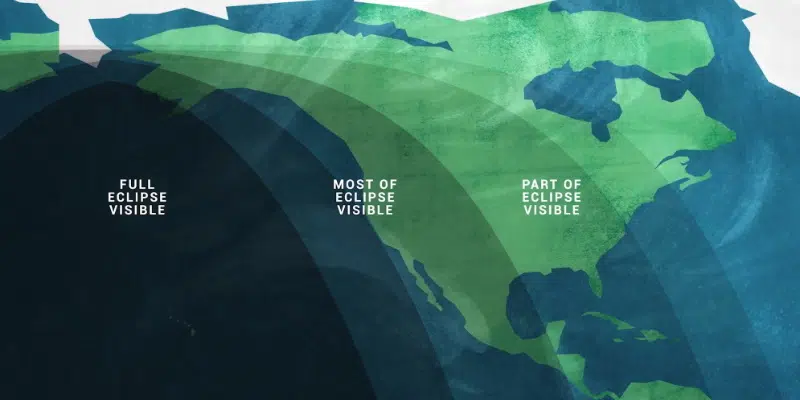Parts of the world were dazzled by the only total lunar eclipse of 2021 last night—dubbed the ‘Super Flower Blood Moon’—but folks in Newfoundland and Labrador hoping to catch a glimpse were left in the dark.
The total eclipse began well after the moon had set from the skies above this province. However, those who were in its path were treated to quite the show of the moon being bathed in a reddish glow as it fell into the earth’s shadow.
Randy Attwood, former executive director of the Royal Astronomical Society of Canada, says people have taken to calling total lunar eclipses “blood moons” due to the fact that the moon’s surface appears to be washed in a red hue. The term “super moon” is used to describe a full moon at its nearest point of orbit to the earth. The flower part is likely due to its arrival during springtime.
When it comes to the ‘super moon,’ Attwood says unless you’re tracking the moon at its nearest and farthest points, you likely wouldn’t be able to recognize the difference.
What makes a "supermoon" different from other full Moons? Compare side-by-side and learn more here: https://t.co/cxZEdHDbao pic.twitter.com/CijIYz4h57
— NASA Moon (@NASAMoon) May 25, 2021
Unlike solar eclipses, Attwood says a lunar eclipse can be quite an event to witness, as you can view it with your own eye without the use of specialized safety equipment.
While this celestial event may have been a miss for those along the east coast, folks in Newfoundland and Labrador will soon be able to catch a glimpse of an upcoming solar eclipse.
Attwood says an annular solar eclipse is set to take place in two weeks’ time—which is when the outer edge of the sun is still visible as a bright ring around the moon. This province isn’t in the direct path to witness the annular eclipse, but residents will be able to see a partial eclipse shortly after sunrise on June 10.
However, Attwood warns that it is dangerous to look directly at a solar eclipse without proper eye protection. He says sunglasses or tinted glass are not enough to protect your eyes. NASA recommends using a method of projecting the image of the sun onto a surface, or by using specially-designated eye protection.
You heard it here first "Don't look directly at the eclipse." But there are a few other things to keep in mind for your own safety! Jenna Hinds will be your guide this year for the June 10th solar eclipse! pic.twitter.com/ckSzakUY7K
— RASC National (@rasc) May 21, 2021
























